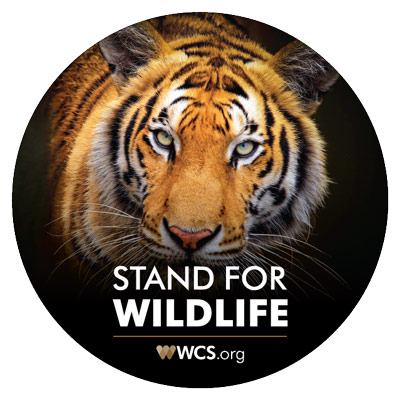Climate Action for Coral Reefs
At COP27, WCS is urging countries to act to center coral reefs in climate adaptation plans
Without urgent commitments to reduce climate emissions, the world is on track to warm 2.5℃ by 2100 (UNFCCC 2022)—substantial progress is needed for climate action at the COP27 negotiations to avoid global environmental and social catastrophes. While mitigating the impacts of climate change and capping warming is crucial, we recognize that some impacts of warming to date have already been “locked in”, and we need to act now to adapt to those changes.
- Protect and restore coral reefs as a climate adaptation strategy. Coral reefs and associated “blue carbon” mangrove and seagrass ecosystems are a natural barrier to protect communities from flooding and sea level rise. Reef-based economies like small-scale fisheries and tourism underpin local cultures, livelihoods, food security and nutrition [3] all over the world. Marine protected areas (MPAs) and other effective area-based conservation measures (OECMs) can help mitigate local pressures and increase coral reef resilience [4,5]. Efforts to conserve coral reefs and linked blue carbon ecosystems can be integrated into national adaptation planning and nationally determined contributions (NDCs).
- Conservation must benefit frontline communities. Nearly one billion people live near coral reefs [1], including Indigenous Peoples who have relied on and looked after these critical ecosystems for thousands of years. Coral reef conservation by national governments must benefit communities for the best chance at long-term success. Conservation must be co-designed with local rights holders and stakeholders to ensure management is equitable, inclusive and has the best chance for enduring success. [6]
- Stem the tide of pollution. Pollution flowing from watersheds to coastal environments is a major contributor to global human disease, with poor water quality estimated to result in at least 1.4 million deaths annually and US$12 billion in economic losses [7,8]. Pollution – like sewage, sediment, and fertilizers – is also the top local threat to coral reefs worldwide, preceded only by climate change [9]. Reducing pollution and investing in better water, sanitation, and hygiene infrastructure can improve both human and coral reef health [10,11]. Governments should address pollution flowing from common identifiable sources, like aging sewage treatment plants, and deploy nature-based solutions like reforestation and regenerative agriculture to improve the condition of watersheds upstream from coral reefs.
- Rebuild community fisheries. Small-scale coral reef fisheries are a renewable source of livelihoods, food security, and nutrition for coastal communities and local economies, if managed sustainably [12]. Over half of the world’s coral reef fisheries are below sustainable targets [13]. Safeguarding dietary nutrients from fisheries under climate change requires equitable and adaptive co-management of fisheries as well as effective participatory area-based management – including MPAs, OECMs, or other managed areas [14,15].
- Measure progress. Stabilizing and restoring live coral cover and reef fish biomass are two critical indicators of success for whether coral reefs can support climate adaptation for nearly one billion people worldwide. Implementing the Post-2020 Global Biodiversity Framework can be a critical junction for coral reefs if key coral reef indicators are adopted and measured by national governments (e.g., with data platforms like MERMAID) to track progress on maintaining coral reefs above ecological tipping points [5,16,17]. Aligning efforts to measure progress for coral reefs is necessary across the Post-2020 Global Biodiversity Framework (CBD COP15) and through the UNFCCC Ocean Climate Dialogues.
To successfully adapt to climate change, we need a healthy ocean. Climate resilient coral reefs result in more climate resilient communities. #Act2Adapt – the lives and livelihoods of fishers and families all over the world depend on it.
References
[1] Eddy, T. D. et al. One Earth 4, 1278–1285 (2021)
[2] Sing Wong, A. et al. Glob. Change Biol. gcb.16391 (2022)
[3] DeGemmis, A. et al. 16 pp. (2021)
[4] Mellin, C. et al. Ecol. Lett. 19, 629–637 (2016)
[5] Darling, E. S. et al. Nat. Ecol. Evol. 3, 1341–1350 (2019)
[6] Andrachuk, M. et al. 17 pp. (2022)
[7] Shuval, H. J. Water Health 1, 53–64 (2003)
[8] Fuller, R. et al. Lancet Planet. Health 6, e535–e547 (2022)
[9] Andrello, M. et al. Conserv. Lett. 15, (2022)
[10] Vega Thurber, R. L. et al. Glob. Change Biol. 20, 544–554 (2014)
[11] Wakwella, A. et al. 22 pp. (2022)
[12] Mellin, C. et al. Nat. Ecol. Evol. (2022)
[13] MacNeil, M. A. et al. Nature 520, 341–344 (2015)
[14] Andrachuk, M. et al. 16 pp. (2022)
[15] McClanahan, T. R. Mar. Policy 128, 104478 (2021)
[16] McClanahan, T. R. et al. Proc. Natl. Acad. Sci. 108, 17230–17233 (2011)
[17] Perry, C. T. et al. Nature 558, 396–400 (2018)
Sign Up for Email Updates
Get news from the field and learn about ways you can help Earth’s most threatened species.
